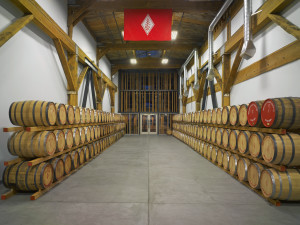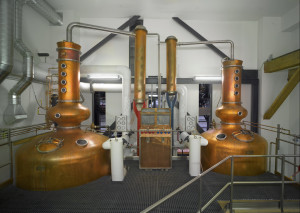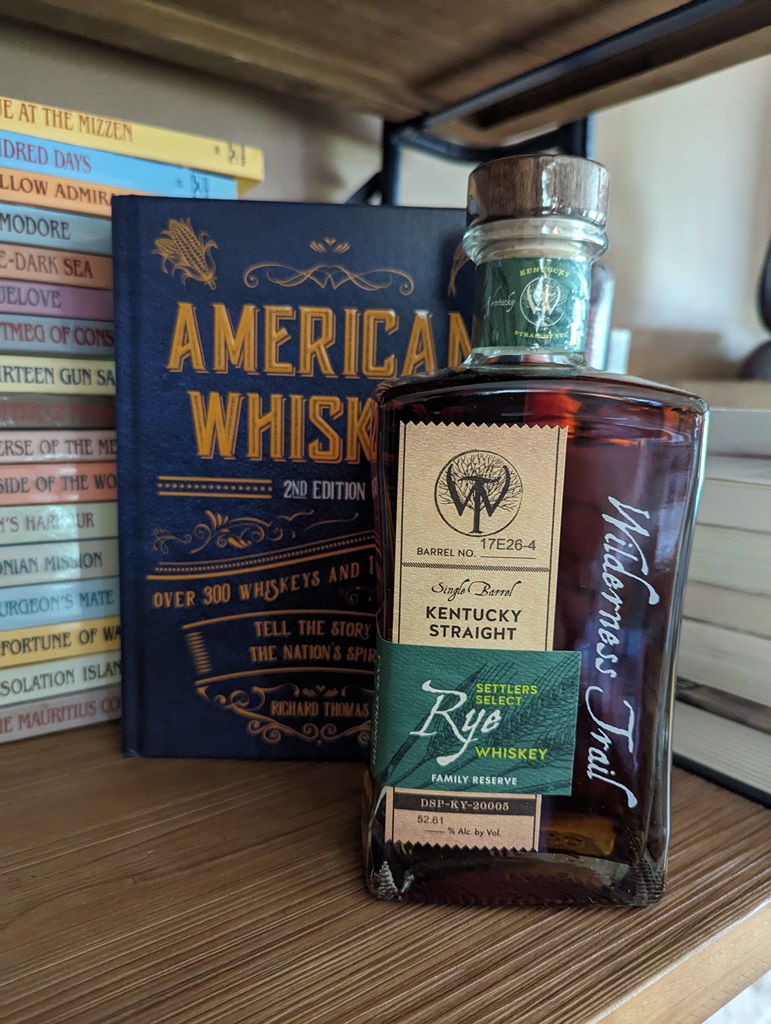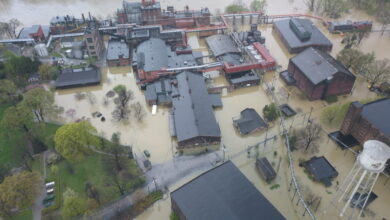Q&A With Matt Hofmann, Westland Distillery
A Chat About Malt Whiskey In The Pacific Northwest
By Richard Thomas

Matt Hofman
(Credit: Westland Distillery)
Although the Pacific Northwest has become a buzzing hive of micro-distilling activity, most of that activity has been in Oregon. Insfoar as whiskey-making in Washington State went, much of the past attention went to Dry Fly Distilling.
Growing up hand in hand with that scene, Seattle’s Westland Distillery has seen plenty of changes. Opened in 2010, Westland moved to their current SoDo facility three years later. Co-founder Emerson Lamb parted company in November 2015, and now it’s Master Distiller Matt Hofmann staking out Westland’s place at the forefront of the burgeoning American malt whiskey sector. I was fortunate to explore the many interesting facets of what Westland Distillery is doing with Matt.
RT: I’ve heard your barrel staves are drawn from Oregon oak. Even within just the white oak species, where it is grown can make a difference. What are the qualities of Pacific Northwest/Oregon oak compared to, say, Alabama oak?

Oregon oak
(Credit: Westland Distillery)
MH: We have barrel staves drawn from all over the United States, but yes one of our larger initiatives is using casks made exclusively from Quercus Garryana, our local species of oak in the Northwest. While it’s a white oak it is not the same species that grows in the eastern half of the country, Quercus Alba. The wood chemistry and flavor profile are totally unique, the flavor profile skews dark: molasses, clove, coffee grounds, blackberry jam, and wood smoke. We’ve released a few single casks matured in garryana oak to some resounding acclaim and we’re excited to be releasing a new product soon that will reach a lot more people around the country that features this oak. Stay tuned…
RT: The similarities to Scotland and the Scottish model come up a lot in discussions of Westland, but I’ve learned crafting an identity is about both what you want to do and what you don’t want to do. You studied at Heriot-Watt University. From that exposure, what parts of the Scottish model don’t interest you?
MH: Our fundamental objective is to create uniquely American single malt whiskey, not a replica of Scottish whisky in the United States. What gives us the provenance and sense of place in making malt whiskey is that Washington State is the best climate for barley growing in the United States. We do use new oak for our aging, but we also use the more classic used bourbon and sherry casks. Our aging climate is also completely ambient, we don’t alter the maturation environment at all. The end result is something unique, using mostly Washington-grown barley and new oak casks that call on the tradition of the American whiskey industry, matured in our climate. Our whiskey then has a true sense of place.
I think the similarities to Scotland, in our perfect climate for barley growth, our numerous peat bogs and the temperate, humid environment set the stage for a malt whiskey distillery, to be a natural thing in Seattle. It’s not forced. The quest that all distilleries have for their identity, I think we have it really easy here because we don’t make anything up, we don’t “make” an identity, we just let it happen.

(Credit: Westland Distillery)
Starting with the fundamentals of raw ingredients is important, but just as important to what makes us who we are is that we allow for the culture of Seattle and the United States at large to manifest itself in our products. What does that mean in practice? We don’t have 700 years worth of cultural restrictions weighing on us telling us we need to make our products a certain way. America is a creative, innovative country and especially so here out west. We follow those innovative urges, in our Belgian brewer’s yeast, our use of roasted malts, and our use of new oak. Heriot-Watt was a great program and I’d recommend it to anyone but I think it’s important to realize that it’s designed to help you follow the status quo.
We’re also doing some things that don’t even really happen in Scotland. We’re exploring new strains of barley bred for flavor, not necessarily for yield. We’re exploring field to field variations in barley, local oak species, and local peat variations. There’s a very exciting spirit of exploration here, not just at Westland but around the country as well, a feeling like anything is possible.
RT: What are your favorites Scottish malts?
MH: This is a hard question to answer, there are so many good ones! From a pure production standpoint, GlenDronach is an immensely interesting distillery so I’m always enjoying their whiskies. What Bruichladdich is doing by focusing on barley and terroir is awesome and really similar to what we’re looking into now, so tasting anything new from that program is exciting. But I think my favorite dram right now is a Bowmore, cask strength, non chill filtered.
RT: The explosion of new whiskey distilleries and bottlers has led to some speculation about “America’s third whiskey state,” or who will come in alongside Kentucky and Tennessee. Washington hasn’t figured in that contention as of yet, but do you think American malt will rise and bring Washington up along with it?

(Credit: Westland Distillery)
MH: American malt will rise, I’m absolutely confident in that. If you look at our history as a country, we’ve taken on the best of the Old World in the spheres of wine and beer over the past century and now we’ve turned to the last frontier, single malt whiskey. Making bourbon and rye were adaptations to local grains, particularly in the eastern half of the country, but to make an American version of the traditional style of whiskey is, I think, something else entirely.
Washington State has, I believe, 120 approved DSP licenses. Not all will make whiskey, but there is a huge passion for whiskey-making here. I see the whole Pacific Northwest, including Oregon and British Columbia, as the future for whiskey in the new world with Seattle at the epicenter.
RT: You’ve resisted being labeled a “craft” distillery, and having seen the numbers I think it’s fairer to describe you as one of whiskey’s medium-sized outfits. Do you have any suggestions on what such middling distilleries, not small but not Jack Daniels’ either, should be called?
MH: We’ve maintained that the catchall term of “craft” is insufficient to describe the incredibly complex category that we and now more than a thousand other distilleries worldwide fall into. But we don’t believe we necessarily need to force an alternative either as the categories should sort themselves out over time.
We’re really seeing the birth of American Single Malt as a category I think this year, we’ve picked up enough critical mass and attention that we can get more specific than “American whiskey- other” or “craft whiskey.” We are starting to see “American Single Malt” categories in spirits competition, and in written pieces, globally. Again, those will sort themselves out in time and it’s something that I think will really benefit the consumer. But in the meantime, we’re proud to have been named the World Craft Producer of the Year by Whisky Magazine at the World Whisky Awards a few weeks ago. There’s many other great “craft” distilleries that fall into this category and for an American Single Malt Whiskey distillery to win that award sends a big message to everyone else: this category and this movement in American single malt whiskey is real.


